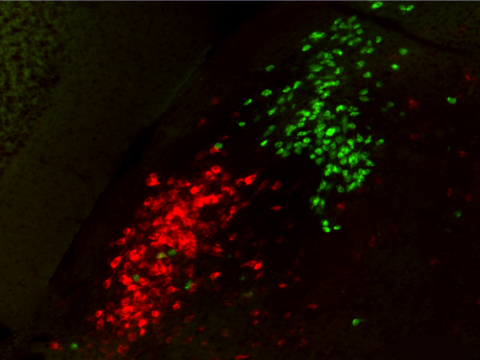
Welcome to the Geerling Lab!
We use neuroanatomical techniques to explore the structure and connections of the brain. Many of the areas we study have intermingled subpopulations of neurons with different genetic identities, markers, and connections. We use in situ hybridization, immunolabeling, and developmental fate-mapping approaches to label genes and proteins that identify distinct subpopulations of neurons. We examine the connections of newly identified neurons by stereotactically injecting genetically targeted anterograde and retrograde axonal tracers into specific brain regions. These tracers are transported from the neuron to its axon terminals (anterograde), from the terminals back to the neuron (retrograde), or in some cases, through a synaptic connection and into the next link in a neural circuit.
We also measure the activity of neurons using cell-type-specific tools including in vivo calcium imaging. We test the physiologic and behavioral roles of newly identified neurons and neural circuit connections using cell-type-specific tools and techniques, including apoptotic cell ablation and chemogenetic or optogenetic activation. Using these techniques allows us to test the necessity and sufficiency of activity in specific neurons (and their specific connections to other neurons) in behaviors ranging from basic arousal (wakefulness) to bladder control, hunger, thirst, and sodium appetite.
Using these and other approaches, our goal is to identify and understand specific neural circuits controlling specific life-sustaining functions — particularly those circuits that sustain heavy damage in a variety of neurologic/neurodegenerative conditions, including Alzheimer’s disease and hydrocephalus.
Geerling lab images

